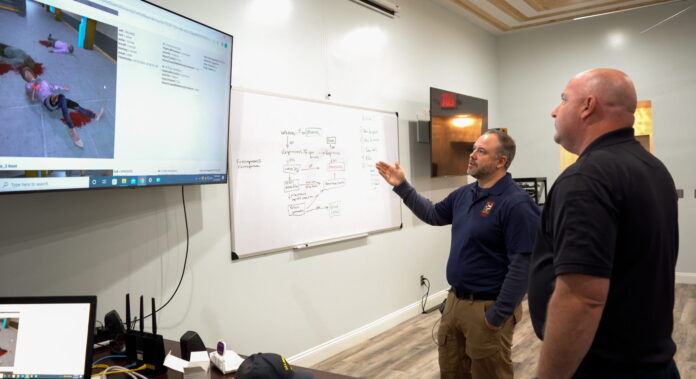
COLUMBUS, Ohio – The increasing frequency of active shooter incidents and other mass casualty events places heighten pressure on first responders to quickly assess, triage and treat victims to save lives. To help first responders prepare for these critical events, The Ohio State University College of Medicinedeveloped a cutting-edge virtual reality disaster response training program.
During the training, participants wear a VR headset that places them in an underground subway bombing scenario where they practice SALT (sort, assess, life-saving interventions, treatment and/or transport) triage. The program can be customized, varying the number of victims, the injuries, and distractions like smoke and noise. Following each training session, the program immediately produces a performance assessment.
“It’s very important for first responders, law enforcement, and physicians to be able to go into a scene, do hemorrhage control, and triage victims to determine who needs medical care first,” said Dr. Nicholas Kman, professor of emergency medicine at Ohio State College of Medicine. “Our high-fidelity program is designed to look very realistic, and once you put that headset on you are immersed into a scenario where you can move around, interact with victims, and make life-saving decisions.”
Analysis
Will this replace real on site training? No one can really prepare you for the real world. How do you train on site with controlled conditions? Will this be more beneficial because the VR could generate numerous different senarios that can be rerun over and over again? At what point do we become too dependent on technology and forget about the people? This is an interesting direction for the future of mass casualty response training. How is this going to change with the addition of AI? Someone could program it to respond in real time and make is harder and harder as the training continues.



